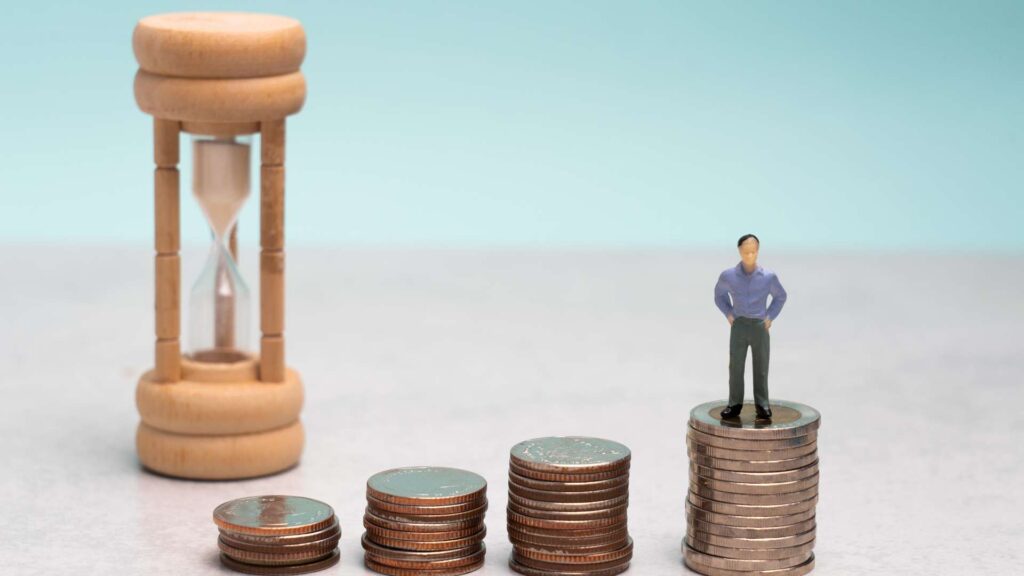Table of Contents
We live in a world where more often feels like the answer — more clothes, gadgets, subscriptions, and everything. Advertisements and social media constantly remind us that happiness is just one purchase away. But as the bills pile up and closets overflow, the satisfaction from “more” begins to fade. Overconsumption often leaves us with stress, clutter, and financial strain.
This is where minimalism comes in. It’s about intentional living — choosing quality over quantity, focusing on what truly matters, and cutting away the excess that doesn’t serve you. When applied to finances, minimalism can reduce stress, make money management easier, and help you align spending with your values. In this blog, we’ll explore how minimalism can boost your sense of financial wellness, practical steps to get started, and how tools like Beem’s Budget Planner can support your journey.
Understanding the Link Between Minimalism and Financial Wellness
What Is Minimalism?
Minimalism is often misunderstood as living with bare walls and a single pair of shoes. In reality, it’s about intentional choices. Minimalism means simplifying your life by focusing only on what adds value and letting go of unnecessary clutter — physical, emotional, and financial. It’s about having enough of what matters most.
Defining Financial Wellness
Financial wellness goes beyond just having money in the bank. It’s about feeling confident in your ability to manage finances, having savings to cover emergencies, being free from overwhelming debt, and aligning your financial habits with your personal goals. True wellness comes when your money supports your life rather than controlling it.
How Minimalism Supports Financial Wellness
Minimalism and financial wellness go hand in hand. By cutting out unnecessary spending, you free up money to save or invest in meaningful goals. By reducing physical clutter, you make space for mental clarity, which makes financial decisions easier. Ultimately, minimalism shifts your focus from chasing trends to building a foundation of stability and freedom.
The Psychological Benefits of Minimalism on Money
Reduced Stress and Anxiety
Clutter in your home often mirrors clutter in your finances. When your environment is filled with unused items, it creates mental noise. The same happens when your finances are scattered across multiple accounts, subscriptions, or debt payments. Minimalism brings calm by reducing both physical and financial clutter, lowering stress and anxiety in the process.
Greater Focus on Values
Minimalism encourages you to spend intentionally, which naturally shifts focus to your core values. Instead of chasing what others deem important, you start asking whether your spending aligns with what matters to you — whether that’s security, freedom, or experiences with loved ones. This clarity makes every financial decision more meaningful.
Improved Emotional Control Over Spending
Shopping is often tied to emotions — stress, boredom, or the desire for validation. Minimalism helps you recognize these emotional triggers and resist the pull of impulsive spending. Over time, this builds self-control and fosters healthier money habits, leading to greater financial confidence.
Practical Ways Minimalism Boosts Financial Wellness
Cutting Back on Unnecessary Expenses
One of the most immediate benefits of minimalism is reduced spending. You naturally cut back on wasteful purchases by identifying what truly adds value. Maybe it’s limiting how many clothes you buy or canceling unused subscriptions. These small changes can add savings that strengthen your financial stability.
Simplifying Budgeting
When you buy less, tracking your spending becomes easier. Fewer categories and fewer transactions mean less mental load when managing a budget. Minimalism streamlines money management so that you can focus on big-picture goals. Pairing this simplicity with Beem’s Budget Planner helps you automate savings, monitor spending, and keep your financial plan on track without the overwhelm.
Encouraging Long-Term Financial Goals
Minimalism doesn’t just save money — it redirects your focus toward long-term goals. Instead of spending on short-term gratification, you can prioritize building an emergency fund, saving for retirement, or investing in a dream project. Every dollar saved becomes a building block for your future rather than a fleeting purchase.
Promoting Sustainable Consumption
Minimalism also promotes sustainability by encouraging quality over quantity. Choosing durable products reduces replacement costs and waste, creating long-term financial and environmental benefits. This shift not only saves money but also gives you peace of mind that your choices reflect your values.
Real-Life Examples of Minimalism and Financial Wellness
- Consider Sarah, a young professional who realized she was spending hundreds each month on fast fashion. After embracing minimalism, she curated a smaller, high-quality, versatile wardrobe. Not only did she save money, but she also felt more confident in her style and redirected her savings into investments.
- Then there’s the Martinez family, who decided to declutter their home. They sold unused items online, canceled unnecessary subscriptions, and started meal planning. The extra income and savings allowed them to build a robust emergency fund within a year — something they had struggled to do before.
- Finally, John, approaching retirement, downsized his home to reduce expenses and simplify his lifestyle. He reduced debt and created a sense of freedom by letting go of the pressure to own more. Minimalism gave him both financial peace and a fulfilling lifestyle in retirement.
How to Start Practicing Minimalism for Better Finances
Begin With Decluttering
The easiest way to start is by decluttering. Begin small — one drawer, closet, or room at a time. As you remove physical clutter, you’ll notice mental clarity too. This process often sparks reflection on how much money has been tied up in unused or forgotten items.
Audit Your Spending
Minimalism also applies directly to your finances. Take a closer look at your bank statements and track where your money is going. You might notice patterns of overspending on things that don’t align with your goals. Recognizing these habits is the first step toward cutting them out and redirecting funds toward priorities.
Create Rules for New Purchases
To avoid slipping back into old habits, create rules for yourself. For example, use the “30-day rule” for non-essential purchases: wait a month before buying to see if the desire still holds. These small systems build mindfulness into your spending habits and prevent impulse purchases.

Align Financial Goals With Minimalist Values
Minimalism is most effective when paired with clear financial goals. If freedom is your value, you might focus on paying off debt. If security is your priority, building a strong emergency fund becomes central. Using Beem’s Budget Planner to track these goals ensures that your minimalist lifestyle translates into measurable financial progress.
How Minimalism Can Boost Your Sense of Financial Wellness: Overcoming Challenges
Social Pressure to Spend
One of the hardest parts of minimalism is resisting social pressure. Friends, family, or social media may encourage you to buy, travel, or constantly upgrade. Overcoming this requires confidence in your values. By focusing on your long-term vision, you’ll find it easier to say no to short-term comparisons.
Emotional Attachment to Possessions
Another challenge is letting go of items tied to memories or identity. Minimalism doesn’t mean discarding everything — it means keeping what truly matters and releasing what no longer serves you. Reframing your mindset helps reduce emotional resistance while still honoring what’s important.
Avoiding Extremes
Minimalism can sometimes be taken too far, leading to unnecessary deprivation. True minimalism is about balance, not extremes. It’s about living with intention, not denial. The goal isn’t to give up joy, but to make space for it by removing distractions and clutter.
How Beem Can Help You Maintain Financial Minimalism
Minimalism works best when supported by systems that simplify your finances. Beem’s Budget Planner complements a minimalist approach by making money management clear and stress-free. Instead of juggling multiple apps or spreadsheets, Beem consolidates your financial picture into one platform.
By automating savings and bill payments, Beem reduces financial clutter, freeing you to focus on your goals. Its progress tracking features provide visual reinforcement, similar to how a minimalist lifestyle provides mental clarity. Minimalism and Beem create a sustainable approach to financial wellness that balances inspiration with structure.
Conclusion
Minimalism is more than a lifestyle trend — a mindset shift that can transform your relationship with money. By cutting away excess and focusing on what truly matters, you reduce stress, simplify decisions, and create space for financial wellness. Minimalism teaches that abundance comes not from having more but enough of the right things.
Supportive tools like Beem’s Budget Planner, from the house of Beem, the personal finance app trusted by over 5 million Americans, make it easier to track progress, automate good habits, and stay motivated. Download the app today to open a high-yield savings account, track interest in real time, and connect your savings to smarter money habits.
FAQs on How Minimalism Can Boost Your Sense of Financial Wellness
Does minimalism mean I have to give up everything I enjoy?
Minimalism isn’t about deprivation — it’s about making intentional choices. You can still enjoy the things that matter most to you. The difference is that you’ll spend less on things that don’t add real value, freeing resources for what truly enriches your life.
How can minimalism improve my savings?
Minimalism creates space in your budget by cutting unnecessary expenses. Small changes, like reducing impulse buys or canceling subscriptions, can lead to significant savings over time. These funds can then be directed toward emergency savings, debt repayment, or investments.
Is minimalism realistic for families with children?
While children bring added complexity, minimalism can be adapted to family life. It may involve simplifying schedules, focusing on experiences over things, and teaching kids the value of intentional choices. Families often find that minimalism reduces stress and creates more meaningful time together.
What’s the difference between frugality and minimalism?
Frugality focuses on saving money, often by seeking the lowest cost. Minimalism focuses on intentional living, which may mean spending more on quality items but less overall. Both approaches can support financial wellness, but minimalism emphasizes value alignment and cost savings.
How does Beem support minimalist financial habits?
Beem reduces financial clutter by automating bills, tracking expenses, and providing progress visuals. This makes managing money simpler and more transparent, which aligns perfectly with a minimalist lifestyle. It ensures your habits stay consistent without overwhelming you with details.
















































